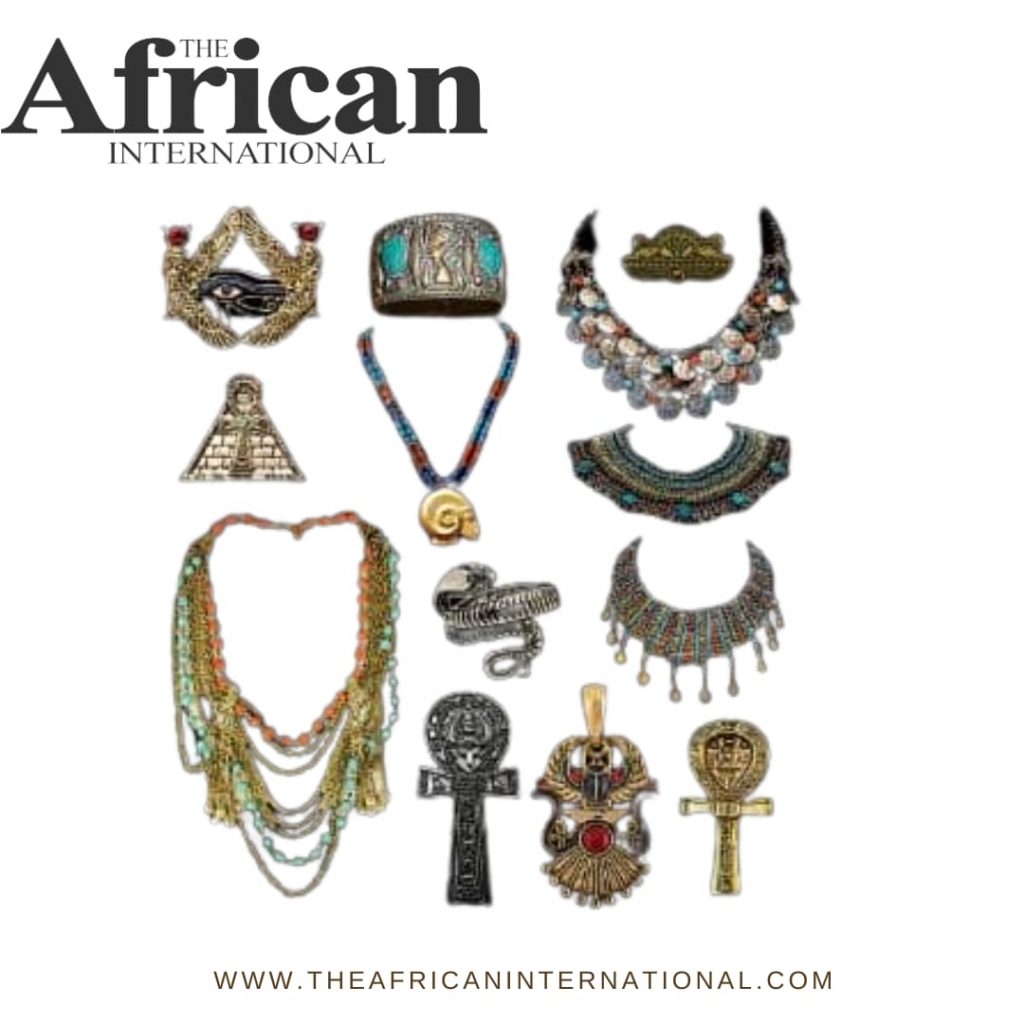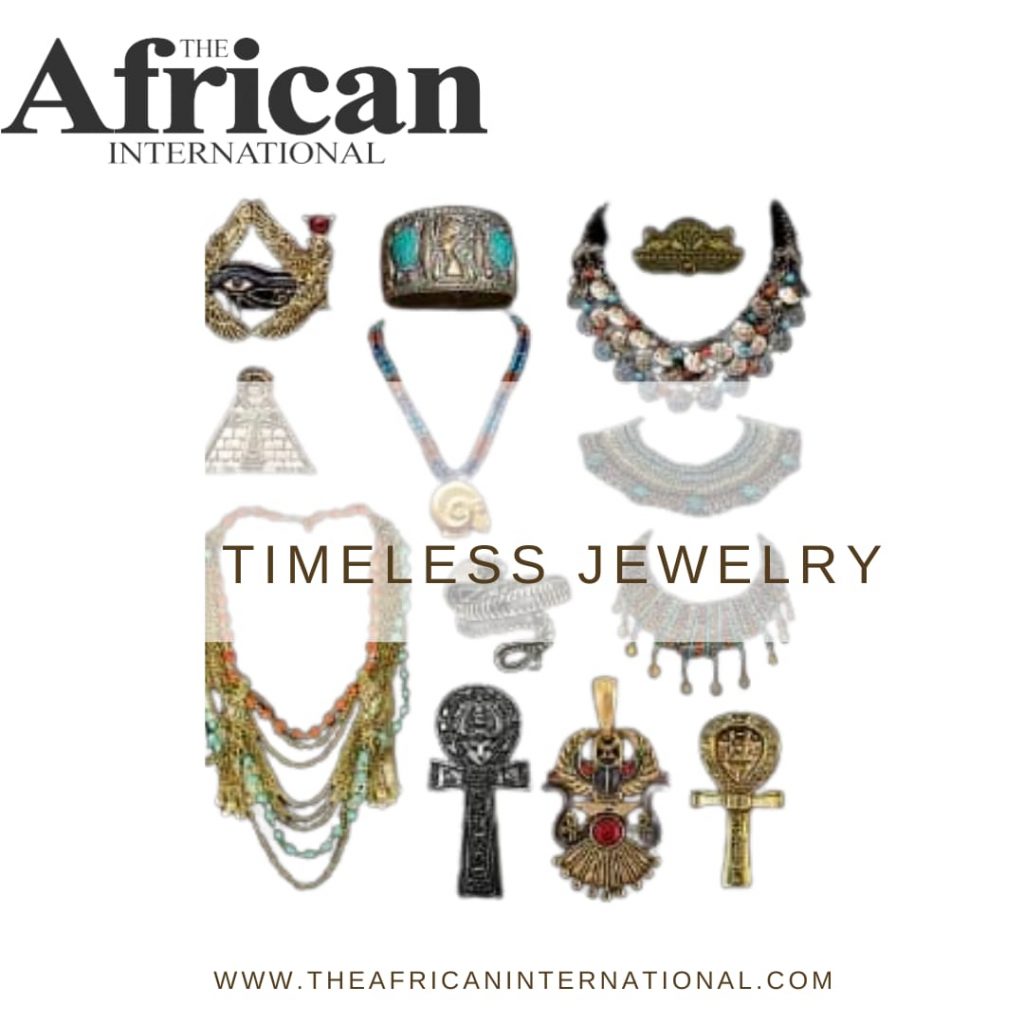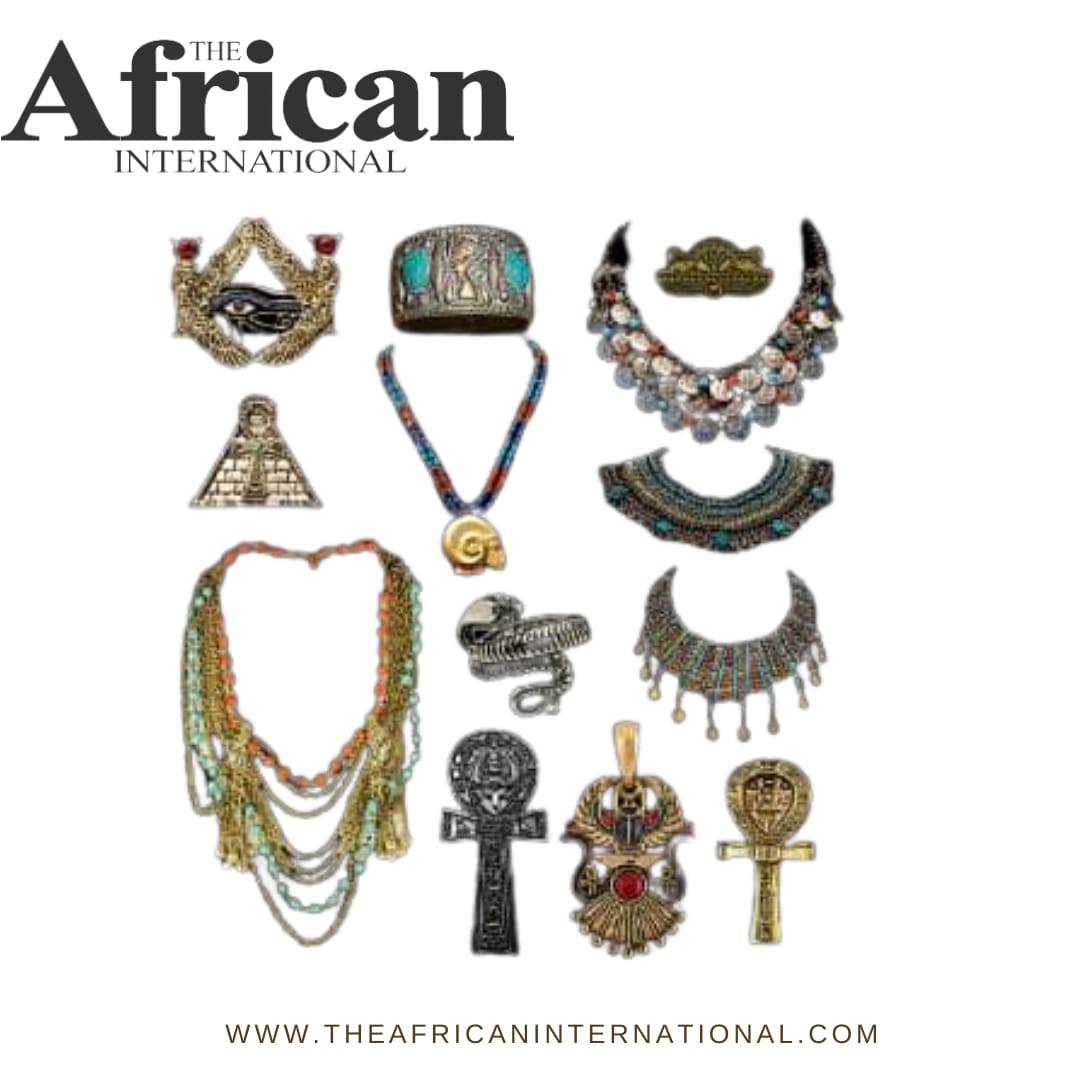By: Jemimah Chungu

For thousands of years, jewelry, ornaments, and other accessories have been an essential part of African fashion and lifestyle. They have been used to accessorize apparel, rituals, communication, protection, and power, among other important uses. Unfortunately, many of these pieces have been lost and looted by other nations.
The forthcoming Grand Egyptian Museum (GEM) in Cairo, set to open later this year (2023). It will display a wealth of accessories and ornaments inspired by those discovered in the tomb of King Tutankhamun over 100 years ago. This hoard of 5000 items included many gem-set objects and adornments, such as his 54 cm-tall gold mask decorated with lapis lazuli, turquoise, amazonite, quartz, and chalcedony (as well as glass and faience).

Other notable pieces included the famous winged scarab pectoral and the golden throne of the king. Additionally, a scarved scarab made of silica-rich transparent to translucent impactite glass from the Libya and Egypt border, known in the trade as Libyan desert glass, was also found.
The possessors of these jewelry and ornaments were buried with them to consume power and wealth in their present and afterlife, to be protected, and to communicate to the sacred.
In late December of last year, a stunning collection of powerful jewelry was discovered in a small shaft and chamber from the 18th dynasty tomb in Armarna, Egypt. This was the same time period in which Egypt was ruled by King Tut and Armana was home to the cult of the Aten, the sun god. Ahram online reported that the jewelry was made of gold and soapstone.
This discovery of jewelry in Egypt is yet another testament to the early knowledge, craftsmanship, and technology of ancient Africa, disproving the notion of “historical African primitivity.”


